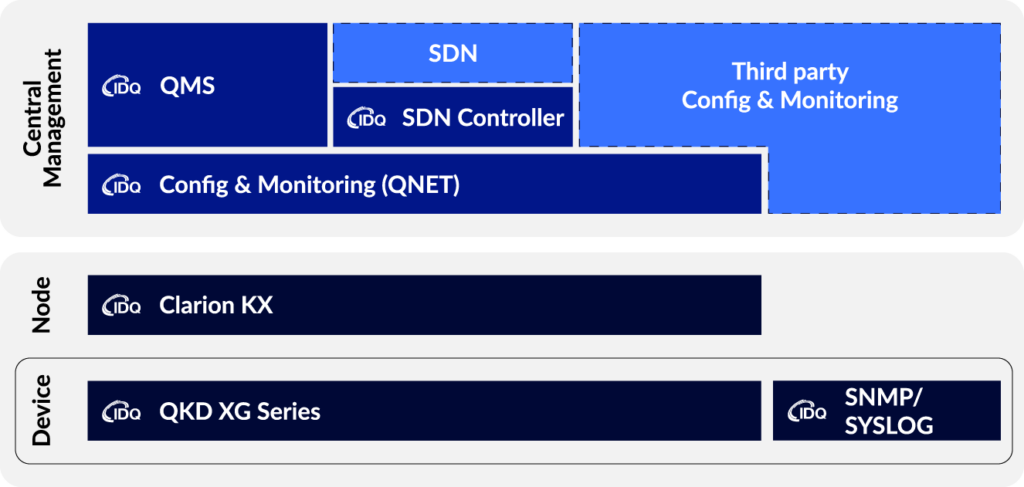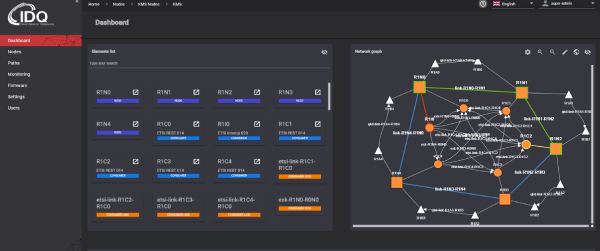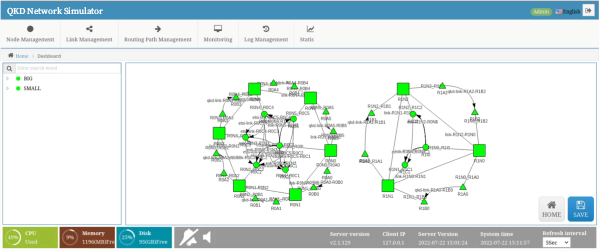Quantum Key Distribution for production environments requiring standard key transmission rate and medium range interconnection
The Cerberis XG is IDQ’s 4th generation of QKD systems, based on 20 years of experience in the development and commercialization of quantum-based products.
Its standard key transmission rate and medium range interconnection is well-suited to link core nodes to edge nodes (end-user nodes), especially in enterprise, government, and telco production environments.
With the Clavis XG, its long range and high key rate counterpart, the XG Series represents the first comprehensive range of Quantum Key Distribution solutions.
Quantum Key Distribution (QKD) is a technology designed to distribute the keys generated by QRNG securely to different locations. The technology offers proven secrecy of encryption keys and let organizations reach long-term confidentiality an integrity while maximizing trust.
QKD exploits a fundamental principle of quantum physics – observation causes perturbation – to exchange cryptographic keys over fiber optic networks with provable security: an eavesdropper intercepting keys transmitted on the QKD quantum channel will necessarily translate into a perturbation that can be detected by the sender and recipient.
Using QKD now will provide immediate protection to data in the face of today’s brute force attacks, ensure that data with a long shelf life is protected against future attacks and safeguard high-value data in a post-quantum computing world.
XG Series systems can be deployed in any network configuration that requires high key throughput or includes long distance links. It is well suited for point-to-point, relay for extended distances, ring or star topologies. The XG Series is designed for uninterrupted and long-term operation by providing high availability services.
XG Series QKD systems have been deployed in enterprise, government, and telco production environments. Their proven reliability has made possible to extend their application to country-wide and continental communication networks.
Easy installation, maintenance and remote support
The XG Series meets all requirements for an easy installation in any data center and telco infrastructure. Its compact 19’’ rackmount 1U size offers the highest integration of QKD technology available in the market today. Hot-swappable power supplies, cooling fans and batteries ensure high availability operation.
The XG Series is designed from the beginning to require minimal onsite site support with its easy to connect appliance and integration into the IDQ QKD management and monitoring framework.
Easy integration
It can interface and communicate with most major encryptor vendors, which offer a QKD-ready interface in their encryption’s appliances (OSI Layer 1/2/3 and MPLS). Quantum communication is performed over a standard optical fiber leading for easy integration, thus minimizing total cost-of-ownership. All optical channels are compatible with the ITU recommendation for Dense-Wavelength-Division-Multiplexing (DWDM).


The full QKD framework
XG Series is compatible with IDQ’s QKD management and monitoring framework, which consists of an Extensive Network and Key Management software suite: Clarion KX. This framework integrates current Software-Defined Network (SDN) QKD ETSI standards as well as IDQ’s Quantum Management System (QNET QMS) to facilitate all large QKD deployments. It ensures a seamless integration in existing infrastructure.
The most advanced QKD Network Management
The QMS provides you with an unprecedented capability to always keep a comprehensive understanding of your QKD network operation, even in the most complex cases. The tool offers an intuitive logical or geographical topology network view to facilitate configuration changes, as well as a monitoring dashboard to help you ensure the network remains healthy.
In addition, IDQ’s QKD Simulator gives you the unique ability to simulate the most intricate QKD networks in a virtual environment. This ensures your network operational team saves time by allowing smooth deployments and maintenance activities.

IDQ’s Quantum Management System (QMS)

IDQ’s QKD Network Simulator